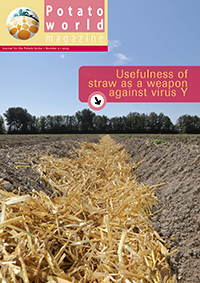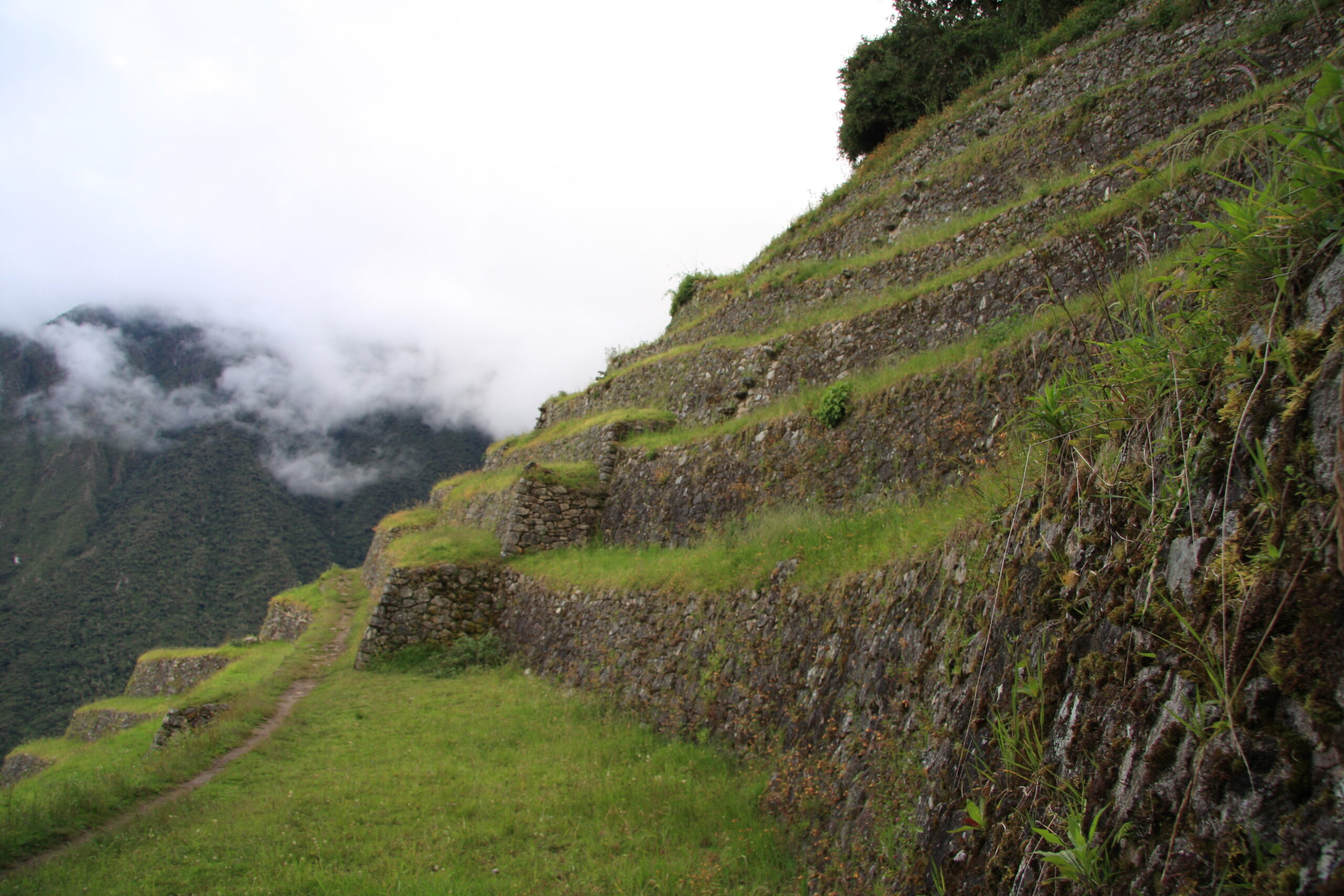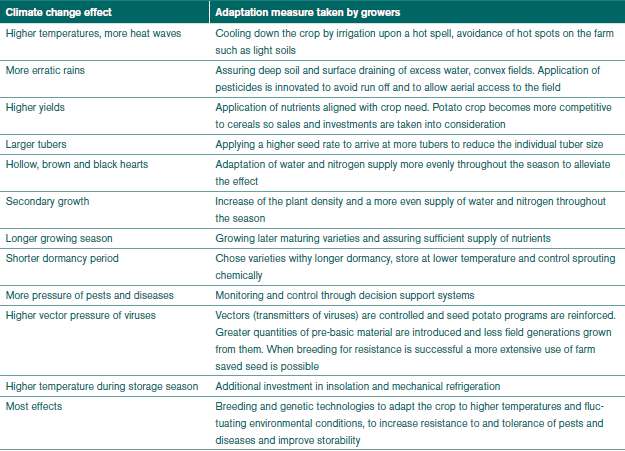Already a subscriber? Activate your premium account

Potatoworld Magazine

Options for the potato crop to mitigate (soften) the climate change through dampening the CO2 emission associated with potato production are limited. Roughly, producing 1 ton of potato involves the production of 70–300 kg of CO2 depending on yield and inputs. Cultural practices reducing this include the reduction in the transportation of seed, fertilizers and manure and of the crop to the market.
When growing, optimization of N-fertilizer and irrigation have the greatest impact on embedded CO2. Growers take care of such measures both from a sustainability point of view and from profitability perspectives. Each kg of CO2 emitted in the end is at the cost of financially substantial inputs. Besides mitigating, adapting to the changes is an objective of crop management by growers.
The most noticeable effects of climate change over the next decades for the potato industry in temperate climates with summer crops, are higher yields with larger tubers with a higher dry matter concentration. The tubers have a higher proportion of internal defects such as black spot and black and hollow hearts and sugar ends and more external defects such as secondary growth. The growing season is extended by earlier planting in spring and later harvesting in autumn which leads to adaptation of accessibility of the fields to till and plant in spring and to harvest in autumn. Accessibility during the season by spraying machines also needs adaptation, whereas the pressure of pests and diseases increases as does the length of the growing season. This necessitates growers to enter the field more frequently. Pesticide application by machines already handicapped by increased irregularity and intensity of rainfall also suffers more from washing off of the applied chemicals. Moreover, excess rainfall leads to water logging in uneven fields. The storage in winter is at higher temperatures which are not sufficiently low to cool the crop down without forced refrigeration where it is only just possible now.
Breeders gradually adapt to the new conditions by breeding, introducing varieties that grow under higher temperatures, produce more and smaller tubers, that have a lower dry matter concentration and are less susceptible to fluctuations in temperature leading to internal and external effects. The new varieties are more resistant to the pests and diseases that benefit from a higher temperature, especially late blight and insects. Innovative breeding and genetic techniques have generally overcome problems related to abiotic and biotic influences in the next decades.
Growers adapt the seed rate and planting pattern leading to more tubers formed per unit area as not to increase the tuber size. Nitrogen and potassium fertilization are raised as well as irrigation prior to harvest to reduce the dry matter concentration. Machinery is adapted to more moist conditions at tilling, planting, nursing and harvesting the crop and growers lay fields out such that water from excess rain is evacuated effectively. More stores are provided with forced cooling systems to assure sufficiently low temperatures, especially at the beginning and the end of the storage period. The storage period, however is shortened because of the extension of the period that the crops are in the soil. Winter crops in subtropical lowlands are hardly subject to the issues of the temperate climate summer crops. The storage season, however, is lengthened as well as the number of degrees that the crop in the store has to be cooled down, with both factors leading to additional efforts and costs related to storage. The rain-fed tropical highland crops are subject to a higher temperature that, if breeding has not taken care of it, makes them more vulnerable to brown rot caused by Ralstonia solani and insects such as tuber moths, leaf miners and trips. The greatest adaptation by the growers stems from the heightened competitiveness of the crop vis-a-vis other crops. Potato and other starchy root and tuber crops such as sweet potato and cassava benefit most from the increase of CO2 in terms of higher yields and lower water use. Wheat and rice in the next decades benefit only marginally and maize has lower yields so the relative contribution of the tuber crop potato to food production increases considerably. This is further enhanced by advances in breeding that make crop protection and seed tuber production just about obsolete. Beside a more extensive use of farm-saved seed potatoes, seed production schemes make more use of pre-basic material (possibly with contribution from hybrid breeding with TPS) to reduce the number of field stages. Future investments in food production see a shift from cereals to starchy root and tuber crops.

Events
©2015 - 2024 Potatoworld | Webdesign and realisation COMMPRO